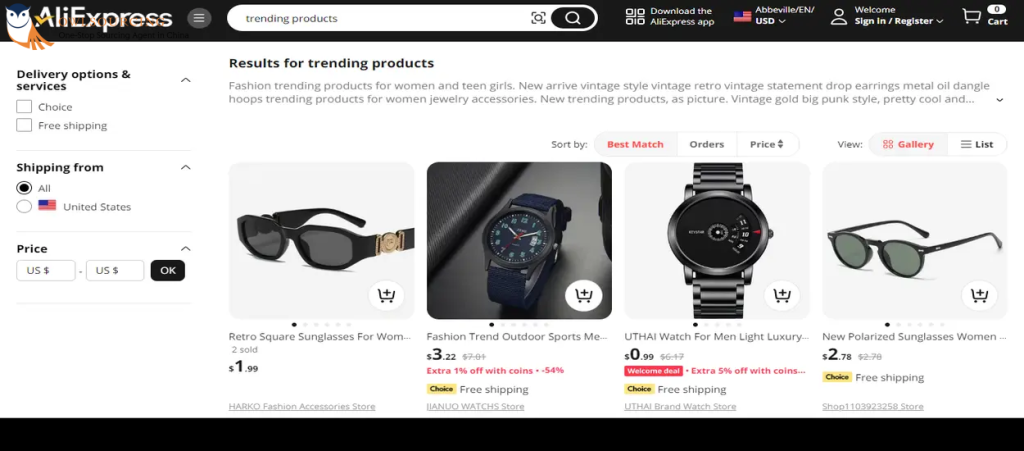Amazon FBA is being discussed more than ever. It is an excellent way to earn extra cash. Moreover, partnering with cheap B2B platforms offers an opportunity to profit more.
However, it may not look like a walk in the park. You cannot start sourcing products from China to sell on Amazon without proper knowledge. Amazon’s FBA sourcing process can be hard; it can cost your investment if not done well. Hence, it is essential to enter the market fully informed.
One of the many concerns is how to find the right products. Well, this article has good answers. Continue reading for reliable Amazon FBA service and product research tips.
Amazon FBA Product Research: The Basics

Product research for Amazon FBA involves finding the market-breaking product that will reap profits. Relying on gut feeling and passion is insufficient in the Amazon FBA business.
You need more to tip the scales and go home with full pockets. Or you will enter a highly competitive market and not make decent sales.
Finding profitable products for FBA requires considering several criteria. Once you have these criteria on lock, it is nearly impossible to go wrong. Analysing these criteria is what product research for Amazon FBA is. Studying these specific metrics is excellent for exploring the market. Metrics such as;
- Estimated daily orders
- BSR
- Category
- Subcategory and more
Understanding how to analyse can lead to lucrative opportunities. The upcoming sections will explore Amazon FBA market analysis and product validation for FBA. We will also discuss ensuring your listed Amazon FBA products bring profits. Here are the Amazon FBA research tips.
Critical Criteria for Sourcing Products for Amazon FBA

You must consider some criteria to find the perfect product for your business. These criteria help you determine the direction you need to take to ensure profits.
We consider the criteria and include Amazon FBA product research tips. Here is a list of four criteria that are essential for a business to enter Amazon FBA:
- Product demand
- Product competition
- Customers
- Profits
- Product Demand
Grasping the demand for a product is essential. It provides insights into how the product is performing on the market. Trying to buy products that don’t have any demand can result in losing money.
So, how do you gauge the product’s demand, and at what level should you draw the line?
You can check a product’s demand by looking at its estimated daily orders. A high estimated daily order means it is sought after and in high demand. Another metric to consider is the BSR (best seller rank).
This metric is usually available on most e-commerce platforms. Low BSR means it has high demand, and high BSR implies the opposite.
Even though it is on the top search page, selling a low-demand product is risky. Hence, we often recommend that businesses aim for products with a BSR around or below 5,000. The more products you try to sell with a low BSR, the better.
However, know that BSR across different industries is not the same. For instance, a cloth with a BSR of #100 would probably sell better than a product with a BSR of #100 in another category. The product’s search volume is high, as is the search keyword volume and frequency. It helps to keep this in mind.
1) Amazon product research: Product Competition

There are many best-selling Amazon products you can import from China. However, product competition is another critical factor to consider to ensure you stand out. Too competitive products can cause yours to be lost in the noise. However, decent competition can bring you immense profits.
So, how do you know a competitive product? Simple, see the number of sellers for the product. Also, you can note the review density. All these metrics can offer insights into how well the product is performing.
2) Amazon product research: Customers
The products are for customers, after all. As a result, they form a big part of your business success. You have to know what they need. If you don’t know what they need, you can serve them as you should.
First, you need to note your target audience. Would you be selling to a middle-aged class of buyers? Or are you selling to a much older audience? The answers to the questions offer insights on how you should approach sales.
Study reviews to learn what customers want. Knowing the customers’ pain points allows you to fill the gap in the competitive market. Moreover, reading thoughtful reviews can help you gauge the demand for the product. You can tell if it is sought after based on what people say.
You also have to look at the review ratings. Products with high ratings, such as 4.5+, mean customers are satisfied. Hence, it might be challenging to fill the gap in the device.
However, if you see products with less than 4.5 stars and some negative reviews, you can come in to fill the gaps. However, this logic is not absolute.
3) Amazon product research: Profit

Since we have discussed the crucial factors, what about profit? You have assessed the product’s demand, competition, and customers. It is time to know if it is profitable. You want to be on the lookout for products within the $20-50 range.
The range is what traders often call the impulse buy range. When a product has an expensive price tag, customers often do more research before buying. It is to ensure the product is worth it.
However, with cheaper products, they are more willing to take risks. However, there is still the risk of customers viewing your product as lower quality.
Hence, you must find the right pricing spot. You have to be familiar with the customer’s perceived value. Once you know what it is, you can place a price tag that falls in the right spot.
Consider lightweight products. Other factors, like logistics, can eat into your profits besides the price tag. Lightweight products are easier and cheaper to transport. While the price might seem meagre, they offer a possibility of high profit margins.
Moreover, you must aim for a high profit margin between 25% and 35%. It helps combat the Amazon FBA shipping and other miscellaneous fees. Using these Amazon product research strategies helps.

Note: Doing this research can break your back. Alternatively, you can opt for some of the best tools for Amazon FBA research, such as:
- Jungle Scout
- SellerApp
- AMZ scout
- Sales analytics
| Tool | Key Features | Pricing (Approximate) | Pros | Cons |
| Jungle Scout |
|
$29 – $84 / month |
|
|
| SellerApp |
|
$39 – $99 / month |
|
|
| AMZ Scout |
|
$29 – $59 / month |
|
|
| Sales Analytics |
|
Varies (often part of larger platforms) |
|
|
Finding Trending Products for Amazon FBA

Now that you know what to look for, why don’t we discuss where to do the looking? Where to buy products to sell on Amazon?
1) Amazon
Of course, your target is the Amazon customer base. There are various categories to consider. They include:
- Bestseller lists
- Movers and Shakers
- Most Wished For
- Gift Ideas section
- Public wishlists
These lists provide the product ideas you need. You can scour through the best sellers category for competitive analysis on Amazon. You can tend to put these product ideas into the research as we discussed above.
2) Discuss with your Supplier
If you are an active seller, another way to get insights is from your supplier. Ask them about the products that are selling, like hotcakes. When you ask, the supplier should already have the information ready. Hence, keeping a great relationship with them for times like this is essential.
3) Search the AliExpress trending list

Even if your target audience is Amazon, other platforms might help. Find out what people are clamouring for at AliExpress, eBay, and Walmart. If a product performs well in different markets, it will also perform well at Amazon. This way, you know what to expect when you visit Amazon.
4) Go to Retail Stores
Go to retail stores around you. Ask for the fast-selling items. Remember, you are gathering information. Any place where trade happens counts! It doesn’t matter if it’s not online. It can help bring the whole research together.
Plus, it is also a great way to conduct price research. Once you finally find the product on Amazon, you can know how to place your price tag.
5) Leverage Keyword Research for Amazon FBA

While not as effective as others on the list, it deserves a mention. You can use keyword research to see what people might like – Head to Google and type in the product keyword.
You can also use social media platforms like TikTok and Twitter to get insights into what is moving. It is a great way to enter the research well. This way, you are sure you have crossed all T’s and dotted the I’s.
Read More:
- How to Safely Source on Alibaba
- How to Import an Excavator from China?
- Ultimate Guide to New Product Development for Amazon Sellers
- How to Find Chinese Private Label Manufacturers for Amazon FBA
Final Thoughts!
Amazon FBA is an excellent way to make extra money. However, for you to make more bang for your buck, you need in-depth research. You can’t rely on gut feeling or passion to find profitable products for FBA.
You need to research to ensure you get the right products. Undoubtedly, the research can be overwhelming. Plus, avoiding FBA product research mistakes can be difficult.
Well, our team is here to lend a helping hand. Hire an Amazon FBA sourcing agent in China to get top-rated services. No doubt, our picks break the market and attract sales. You can trust OwlSourcing to deliver.


